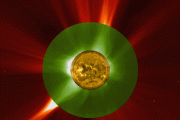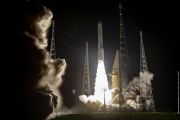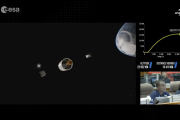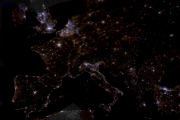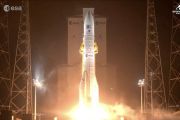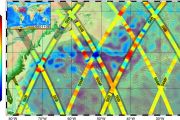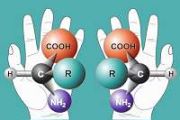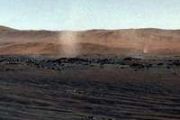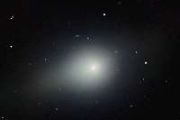
Copernical Team
Juice: running on solar power in the dark
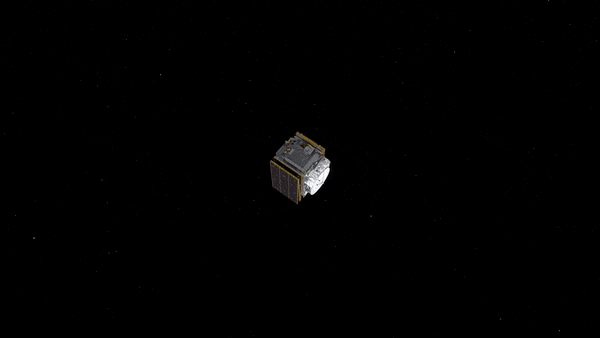
Welcome to Jupiter space: to one side looms the vast cloudy face of the largest planet in our Solar System; in the other appears a shrunken Sun, like a spotlight in the sky, with just 3% of the illumination from Earth orbit arriving here. This basic fact presented a major challenge to those planning ESA’s Jupiter Icy Moons Explorer, Juice, mission: how to make solar power work in such a gloomy environment, located an average 778 million km away from our parent star?
Beneath the Earth, ancient ocean floor likely surrounds the core
 Through global-scale seismic imaging of Earth's interior, research led by The University of Alabama revealed a layer between the core and the mantle that is likely a dense, yet thin, sunk ocean floor, according to results published in Science Advances.
Seen only in isolated patches previously, the latest data suggests this layer of ancient ocean floor may cover the core-mantle boundary. Su
Through global-scale seismic imaging of Earth's interior, research led by The University of Alabama revealed a layer between the core and the mantle that is likely a dense, yet thin, sunk ocean floor, according to results published in Science Advances.
Seen only in isolated patches previously, the latest data suggests this layer of ancient ocean floor may cover the core-mantle boundary. Su Was plate tectonics occurring when life first formed on Earth?
 Earth is a dynamic and constantly changing planet. From the formation of mountains and oceans to the eruption of volcanoes, the surface of our planet is in a constant state of flux. At the heart of these changes lies the powerful force of plate tectonics-the movements of Earth's crustal plates. This fundamental process has shaped the current topography of our pla
Earth is a dynamic and constantly changing planet. From the formation of mountains and oceans to the eruption of volcanoes, the surface of our planet is in a constant state of flux. At the heart of these changes lies the powerful force of plate tectonics-the movements of Earth's crustal plates. This fundamental process has shaped the current topography of our pla NASA awards agreement for high-resolution synthetic aperture radar
 NASA has awarded a sole source Blanket Purchase Agreement (BPA) to Capella Space Corporation of San Francisco to provide high-resolution Synthetic Aperture Radar (SAR) (0.5 meter to 1.2 meters) commercial Earth observation data products.
Under this agreement, the government will issue fixed-price BPA Calls for these products, at a not-to exceed value of $7 million per Call. The work will b
NASA has awarded a sole source Blanket Purchase Agreement (BPA) to Capella Space Corporation of San Francisco to provide high-resolution Synthetic Aperture Radar (SAR) (0.5 meter to 1.2 meters) commercial Earth observation data products.
Under this agreement, the government will issue fixed-price BPA Calls for these products, at a not-to exceed value of $7 million per Call. The work will b Fish-inspired, self-charging electric battery may help power space applications
 A research lab at Penn State will equally share a three-year, $2.55 million grant from the Air Force Office of Scientific Research (AFOSR) with three other teams at Carnegie Mellon University and the Adolphe Merkle Institute of the University of Fribourg in Switzerland. The multidisciplinary research collaboration aims to develop a framework for the design and production of soft, self-charging,
A research lab at Penn State will equally share a three-year, $2.55 million grant from the Air Force Office of Scientific Research (AFOSR) with three other teams at Carnegie Mellon University and the Adolphe Merkle Institute of the University of Fribourg in Switzerland. The multidisciplinary research collaboration aims to develop a framework for the design and production of soft, self-charging, Northrop Grumman expands space technology capabilities in Huntsville
 Northrop Grumman Corporation (NYSE: NOC) cut the ribbon on a new, two-building campus located just outside of Redstone Arsenal in Huntsville, Alabama, expanding its launch and missile defense development capability. This campus will be home to over 1,000 Northrop Grumman employees in the Huntsville area.
"Our new lab enables us to deliver innovative solutions to our customers on rapid time
Northrop Grumman Corporation (NYSE: NOC) cut the ribbon on a new, two-building campus located just outside of Redstone Arsenal in Huntsville, Alabama, expanding its launch and missile defense development capability. This campus will be home to over 1,000 Northrop Grumman employees in the Huntsville area.
"Our new lab enables us to deliver innovative solutions to our customers on rapid time Musk's Twitter marks BBC, NPR as 'government funded' but not Tesla or SpaceX
 Elon Musk's Twitter marked the BBC and NPR as "government-funded" on Saturday but has not applied the label to Tesla or SpaceX - which have received billions in subsidies.
Despite the significant contributions of federal and local governments to his businesses, Twitter this week decided to label NPR as "state-affiliated" media.
After pushback from NPR, Twitter has since changed the l
Elon Musk's Twitter marked the BBC and NPR as "government-funded" on Saturday but has not applied the label to Tesla or SpaceX - which have received billions in subsidies.
Despite the significant contributions of federal and local governments to his businesses, Twitter this week decided to label NPR as "state-affiliated" media.
After pushback from NPR, Twitter has since changed the l Rocket Lab updates launch location for NASA's TROPICS mission
 A NASA constellation of four storm tracking CubeSats are getting a new launch location as they prepare to study tropical cyclones beginning in the 2023 Atlantic hurricane season. NASA's Time-Resolved Observations of Precipitation Structure and Storm Intensity with a Constellation of SmallSats (TROPICS) will observe the atmosphere to increase our unders
A NASA constellation of four storm tracking CubeSats are getting a new launch location as they prepare to study tropical cyclones beginning in the 2023 Atlantic hurricane season. NASA's Time-Resolved Observations of Precipitation Structure and Storm Intensity with a Constellation of SmallSats (TROPICS) will observe the atmosphere to increase our unders Orion stretches its wings ahead of first crewed Artemis mission
 Before NASA's Orion spacecraft for the Artemis II mission can be outfitted with its solar array wings, teams at the agency's Kennedy Space Center must first verify that the arrays extend and close properly. On March 17, 2023, technicians inside the Florida spaceport's Neil Armstrong Operations and Checkout Building unfurled one of the wings to confirm all mechanisms operate as expected.
Or
Before NASA's Orion spacecraft for the Artemis II mission can be outfitted with its solar array wings, teams at the agency's Kennedy Space Center must first verify that the arrays extend and close properly. On March 17, 2023, technicians inside the Florida spaceport's Neil Armstrong Operations and Checkout Building unfurled one of the wings to confirm all mechanisms operate as expected.
Or A Jovian journey to the icy worlds of a Gas Giant
 On April 13, 2023, the European Space Agency is scheduled to launch a rocket carrying a spacecraft destined for Jupiter. The Jupiter Icy Moons Explorer - or JUICE - will spend at least three years on Jupiter's moons after it arrives in 2031. In October 2024, NASA is also planning to launch a robotic spacecraft named Europa Clipper to the Jovian moons, highlighting an increased interest in these
On April 13, 2023, the European Space Agency is scheduled to launch a rocket carrying a spacecraft destined for Jupiter. The Jupiter Icy Moons Explorer - or JUICE - will spend at least three years on Jupiter's moons after it arrives in 2031. In October 2024, NASA is also planning to launch a robotic spacecraft named Europa Clipper to the Jovian moons, highlighting an increased interest in these 












